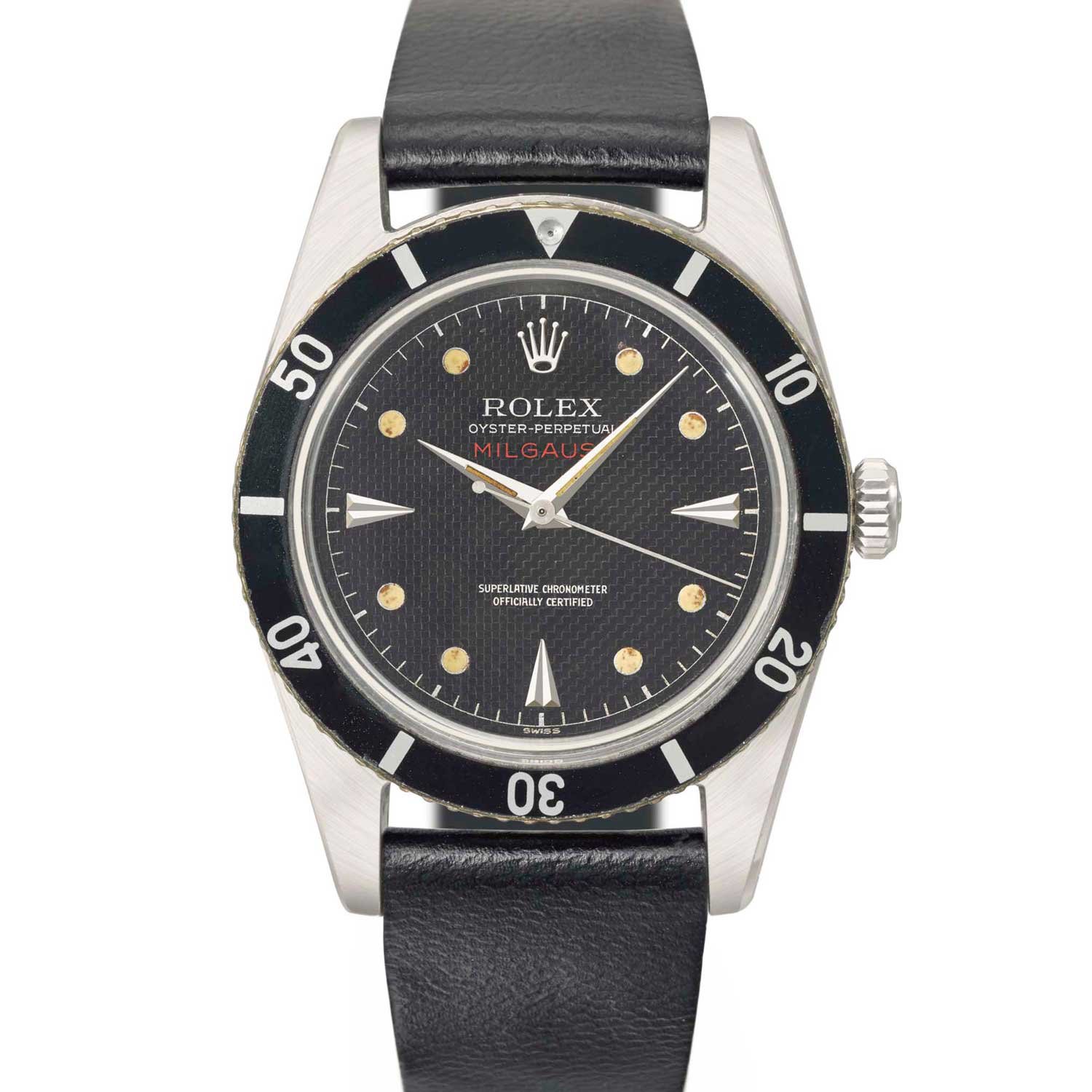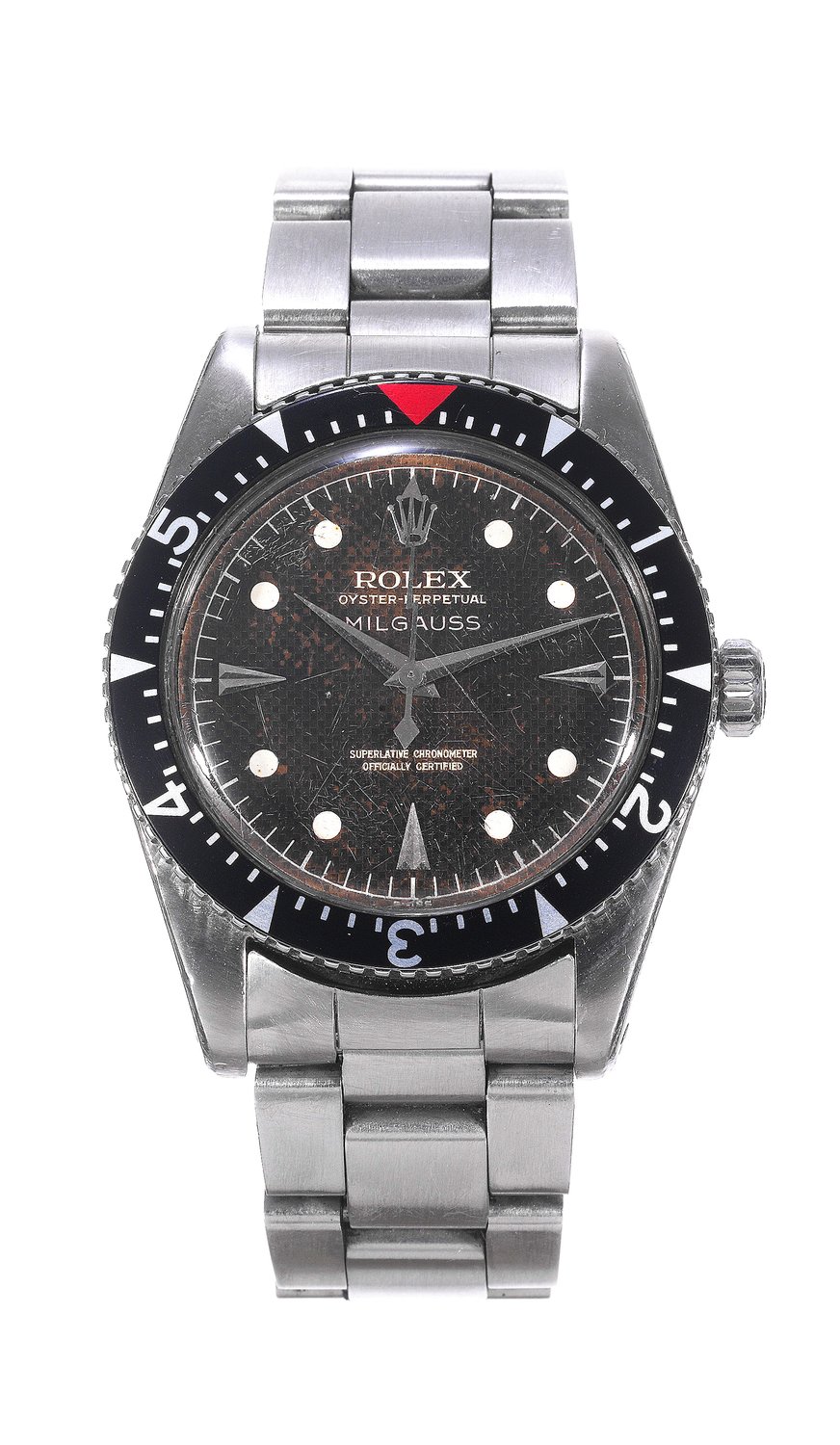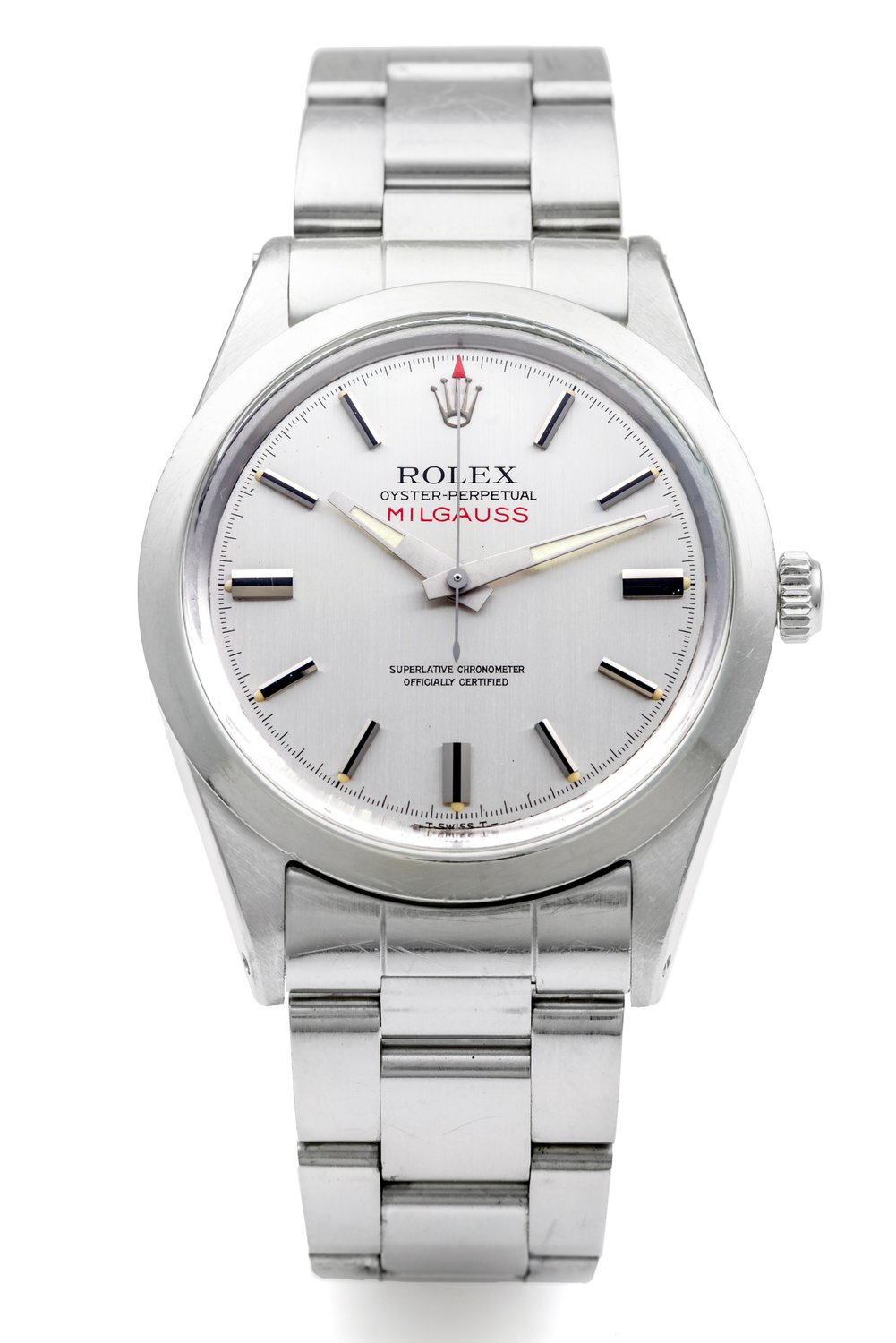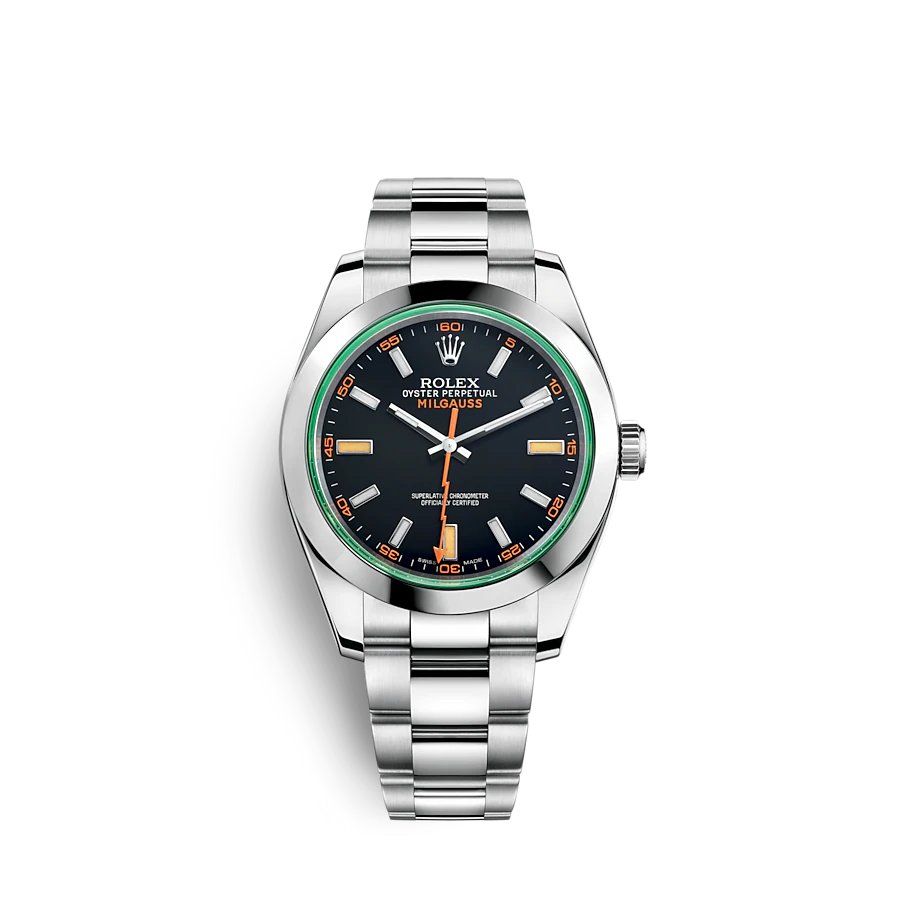The history of the Rolex Milgauss

Published: Nov 10, 2021
One of the not-so talked about Rolex watch is the Milgauss - a watch that takes its name from “Mille” – French for 1000 and Gauss – the unit used for measuring magnetic fields. The Rolex Milgauss launched during the 1950s and has a very special purpose. Just as the famous watchmaker has released models for sportsmen and adventure-seekers, the Rolex Milgauss was designed for scientists and professionals and could withstand high levels of electromagnetism. Released during a time where watches were a tool to own for a specific purpose, the Milgauss had entered the world during the Atomic age. Sure, there were dive watches for professional divers and pilot’s watches for professionals within the aviation industry. But what of those for scientists? The Rolex Milgauss answered this need with a tool watch that would not falter under great electromagnetic fields. Before then, the timing of a watch would become significantly affected when subject to magnetic fields greater than 50-100 gauss.
The Rolex Milgauss was tested by the European Organization for Nuclear Research (CERN) – a particle physics laboratory that houses the world’s most powerful particle accelerator named the Large Hadron Collider (LHC). The ATLAS Barrel Toroid is situated here – the largest superconducting magnet ever made, which was first switched on in November 2006. It was in this laboratory that the Rolex Milgauss watch was proved to have resisted magnetic fields up to 1,000 gauss and thus proved a huge technological advancement for both the science industry and for Rolex. Here, we take a look at this ground-breaking watch by Rolex and its history.
Why are Rolex Milgauss watches so special?
Despite not gaining the same popularity and following as the Rolex Cosmograph Daytona or the Rolex Submariner, the Rolex Milgauss is very special in its own right. Adding to its allure, the watch became discontinued in 1988. For over 20 years, Rolex collectors went without a new Milgauss watch, but in 2007, the timepiece was reinvented once again. The “scientist’s watch” was released in three different versions. They also brought with them some new technological advancements, which we’ll talk about shortly. But the Rolex Milgauss watch can still be appreciated today for its impressive magnetic-resistant, water-resistant and shock-resistant design. The watch can be found in Rolex’s current catalogue and is defined by its solid-looking, thick case, topped by a revolutionary sapphire crystal glass material, housing a self-winding movement underneath.
The first generation of the Rolex Milgauss
Before Rolex released the innovative Milgauss watch, professionals working within the science industry were experiencing a big problem. Those wearing wristwatches in power plants, medical facilities, or research labs were experiencing difficulties keeping track of accurate time. If their wristwatch became affected by magnetic fields reaching anywhere between 50 and 100 gauss, their timepiece would become disrupted.
The very first one: Rolex Milgauss 6543

6543 and 6541
The first Rolex Milgauss watch was the ref 6543 and was designed precisely for those working in areas where magnetic fields were a contributing factor to the performance of their timepiece. The Milgauss watch was antimagnetic and was tested for its reliability, accuracy and anti-magnetic properties, not only by CERN but by other institutions and scientists that followed. It is thought that only around 150 examples of the very first ref 6543 were produced. Some may not even associate the model with being the first Milgauss, since the ref 6541 followed just two years later, marking for many what is today considered as the start of the Rolex Milgauss watch collection.

Faraday Cage Principle
The design of the Rolex Milgauss watch works on the principle of a Faraday Cage. This is a soft iron band that braced the movement of the first Milgauss watch ref 6543 but then evolved into a case that enveloped the movement of the more modern Milgauss watches that soon followed. This internal shield is crafted from ferromagnetic alloys.
The second generation
The first two references of the Rolex Milgauss legacy were very similar in appearance to the Rolex Submariner. They featured a round case with a black rotating bezel surrounding a matching black dial. They did, however, boast different dauphine-shaped hands that mirrored the pointed hour markers located at 3, 6 and 9 o’clock on the display. In the design of the Milgauss 6541, the second hand took on a different appearance. It featured a lightning bolt shape.

Honecomb effect
It also featured an unusual honeycomb dial effect, enhancing a distinct Art Deco-inspired design language. Also differing from the Submariner watch were the markings on the bezel. Instead of the Submariner’s 10, 20, 30, 40, 50 markings, the bezel of the Milgauss featured 1, 2, 3, 4, 5. The wearer could use this feature for counting 60 seconds, 60 minutes or up to 12 hours if they so wished.
The third generation
During the 1970s, Rolex replaced the 6543 and 6541 models with the ref 1019 and its design stuck with Rolex enthusiasts. Finally, Rolex had done it. Some of the original design details of the Milgauss watch had been changed and the modern watch found its footing. The Rolex Milgauss ref 1019 is known as the third generation and emerged onto the scene with a sporty-looking persona that caught the eye of beloved Rolex watch fans. It had a somewhat restrained and far more simplified look. Its straight-forward dial was legible and the hour markers had reverted to plain batons. Rolex, who has always been known to experiment extensively with different variations of any one model, produced a spinning bezel and fixed bezel option for the Milgauss watch. It is believed by some that the decision to offer the watch with a fixed bezel was in response to the Milgauss’ slow start in terms of sales.
The Rolex Milgauss ref 1019

The Rolex Milgauss ref 1019, with its fixed bezel in matching stainless steel, was similar in terms of its hour markers to the Datejust and Day-Date models. The hands were more standard in style, taking on a stick shape, however, the lightning bolt hand that had become such a defining feature of the Milgauss watch had now been replaced for a pencil-shaped alternative, finished with a small red arrow-tipped feature. There were now dial options to choose from; a silver or black – both of which forwent the honeycomb effect on their surface. Amongst these already sought-after Milgauss watches were some models with dials that went without any lume at all. It is believed that these variants were developed by the request of scientists at CERN due to the risks associated with radioactive substances interfering with laboratory testing, and have thus become some of the rarest of the 1019 generation.
Before the Milgauss 1019, the previous two references had been powered by the Calibre 1080, but were now driven by the Calibre 1580 with an increased performance of 19,800 vibrations per hour as opposed to 18,000. An added hacking function also enabled the seconds hand to be stopped by pulling out the crown. The Milgauss 1019 went pretty much unchanged until it ceased production in 1988.
The new Rolex Milgauss watch
In 2007, Rolex relaunched the Milgauss with the ref 116400 in an enlarged 40mm case as opposed to the previous 38mm size. Its Oystersteel case was constructed from 904L stainless steel and featured the antimagnetic shield from the 1950s that this time protected the Calibre 131 movement, equipped with a Parachrom hairspring for greater magnetic resistance. There were three variations of the watch; one silver dial and two black dial versions – one protected by a revolutionary green-tinted sapphire crystal glass as opposed to the standard clear type. In 2014 the black dial with a clear sapphire crystal front had been discontinued and replaced with a Z-Blue dial version with an electric blue sunburst finish and, once again, a green sapphire front. Two years later and the white dial variant became discontinued, leaving the two green sapphire crystal glass options available today. There are still waiting lists for the two current models in the brand’s catalogue, whilst models on the pre-owned market can be expected to sell for a premium price.

Although not the most popular Rolex watch, the Milgauss certainly deserves its place in history. It remains the perfect tool for those with a passion for science and discovery and extends upon Rolex’s rich heritage in creating technically-sophisticated and expertly engineered mechanical wristwatches for all manner of challenges and conditions. Due to its popularity during the 1960s and 1970s, vintage Milgauss watches are considered pretty rare and remain hugely sought-after within the pre-owned market. Whether you like the style of the Rolex Milgauss or not, what cannot be argued is its technical capability when it comes to withstanding some of the most extreme conditions thanks to its use of advanced technology and a selection of superior materials and watchmaking components.
More guides:
To find out more about which Rolex hold their value you can read more of our guides where we cover all Rolex Nicknames or our classic guide to the Day Date models and our comparision with their sister brand: Rolex vs Tudor.
Subscribe our newsletter for more news related content and find our quick comparitive guides to help you decide which watch you should buy next: